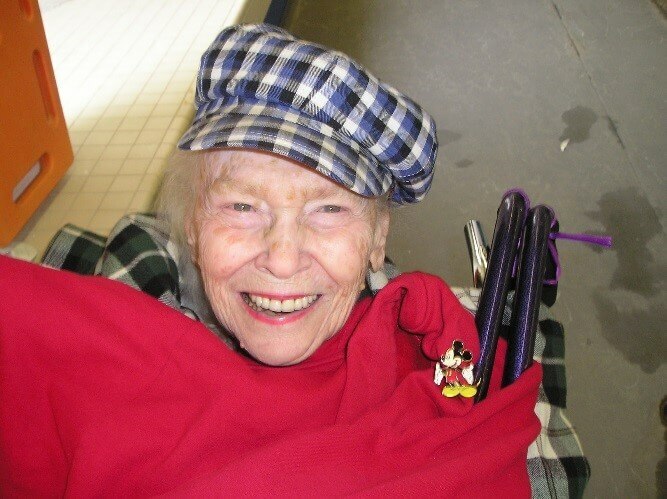
Definition of Indepenent Retirement Living
Independent Living, also known as Retirement Living, is a senior housing option for aging adults where the resident lives independently without aid or assistance. The philosophy behind Independent Living is to keep the resident sovereign, create a social community, and promote healthy living and independence. Independent Living refers to level of care rather than age, and thus it is common for various age groups to be living under the same community, ranging from people in their late fifties to early nineties. Independent living provides the lowest level of care in senior housing, followed by assisted living and skilled nursing.
Depending on the community, services may include:
- Transportation to medical appointments
- Transportation for errands
- Laundry Services
- Dining Services - options may vary from buffet-style, sit-down dining, open-hour dining, set-hour dining
- In-Community Social Programs – bingo, movie nights, trivia nights, holiday celebrations, etc.
- Outside -the-Community Social Programs – day trips to museums, movies, casinos, etc.
- Fitness and exercise programs
- Salon, barber and spa services
Retirement Living does not include:
- Medical Assistance and Health Care
- Rehabilitation Therapy
- Assistance with Daily Living (ADL’s) – self performance activities such as bathing, homemaking, feeding, grooming, dressing, and going to the bathroom
What does a Retirement Community look like?
Independent living communities can vary in size from small to large, from approximately 30 units to 300 units, and can look and feel very different depending on the setting and ambiance of the community. When choosing a retirement community it is important to find an option that best suits your needs, income and lifestyle:
- Condo Setting - apartment style living with community amenities located in the building
- Cottage Setting – small houses or townhomes with community amenities located in a detached building on-site
- Mobile Homes – caravan style living with community amenities located in a detached building on-site
- Active 55+ Communities – geared towards individuals with higher incomes, these communities are well known for having updated amenities, well-maintained facilities, and a fantastic curriculum of programs and classes
- Low-Income Housing/HUD Housing/Subsidized Housing/Section 8 Housing – geared towards individuals with low annual household incomes, typically a portion of rent is subsidized by the government
- Veteran Housing – reserved only for Veterans and their spouses, typically a portion, if not all, of rent is subsidized by the government
What if the resident needs help with Assistance in Daily Living (ADL’s) and/or Medical Care?
Retirement Homes do not provide Assistance with Daily Living and Medical Care; therefore when a situation requires one of these services there are multiple routes the resident can take. The first step should always be to assess the extent of care required. If the resident needs assistance with grooming, bathing, dressing, medication reminders, dressing, etc. then hiring a third party homecare provider may be the easiest and most affordable option. If the situation deteriorates to the point that it is unsafe for the resident to live without 24 hour readily available assistance, then moving the resident to an assisted living facility is the best option.
If medical care is required then the extent of medical attention should be assessed immediately. If it is determined that care can be provided inside the home then outsourcing a third party Home Health Agencies is a great option. Home Health Agencies provide nursing care, physical therapy, occupational therapy, and speech therapy, among other services. In some cases the needs of the resident calls for a doctor’s attention rather than the aid of a home health agency. Conveniently, there are visiting physicians and house-call doctors who are experts at providing care in the retirement facility.
In more extreme cases, the resident may need to be transferred temporarily or moved permanently from the retirement home in order to receive the proper level of care. Short-term rehab facilities are designed with the intent to quickly rehabilitate the patient and get them back in their home as fast as possible. If long-term rehab is needed the senior should be transferred to a nursing home. Many retirement homes also provide assisted living, Alzheimer’s care, skilled nursing, and some even provide all three (CCRC - Continuum Care Retirement Community). The virtue of a CCRC is the resident rarely has to leave the facility to receive the appropriate care needed. In the event that hospitalization is required immediately call 911.
Other Common Names for Independent Living:
- Retirement Living, Retirement Homes, Retirement Communities
- Active Adult Retirement
- 55+ Retirement Communities
- Senior Housing, Senior Apartments
Deciding to make the transition to move away from home and into senior housing can be difficult for both the senior and the family. It is important to remember that each state has its own laws and regulations governing senior housing, and therefore extensive research is advised. If you have any questions, would like to compare costs and services, or are simply looking to find out more information, we have FREE Care Counselors who can help by calling 1-800-955-8510, or sending an email to info@seniordirectory.com.
Published by Alex Mizer with Senior Directory, LLC on February 20th, 2014


Comments